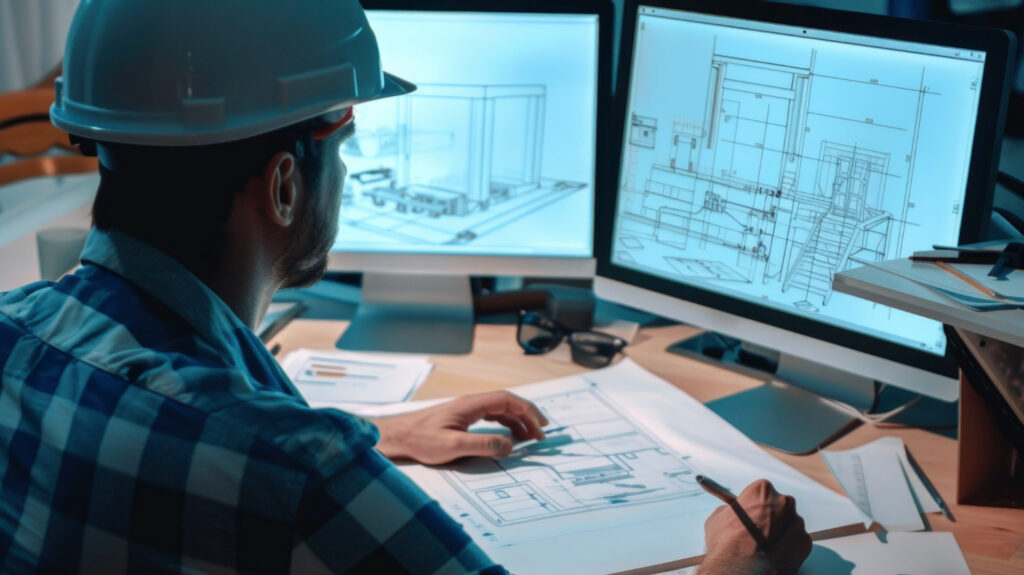Cost Estimation and Budgeting in General Contracting Projects: The Real Numbers Behind UAE Construction
“How much will it cost?” is the first question. Getting a straight answer is rare.
If you’ve ever tried to build anything in the UAE — whether it’s a warehouse in ICAD, a villa in Saadiyat, or a retail complex in Dubai Hills — you’ve probably asked this question early.
You might’ve received answers like:
- “Depends on the scope.”
- “We’ll know once the drawings are ready.”
- “Let’s do a ballpark now and refine later.”
All technically true — but not always helpful.
Here’s the thing: You don’t need exact numbers on Day 1. You need clarity.
You need a cost strategy. A roadmap. A process that inspires confidence, not confusion.
This article breaks it down. No fluff. Just what you need to know to budget smartly and build powerfully.
What Does Construction Really Cost in the UAE?
Short answer: It varies — dramatically.
- A high-end residential villa can range from AED 650 to AED 1,200 per sq ft.
- A steel-framed warehouse might cost AED 250 to AED 500 per sq ft, depending on MEP specs.
- A Grade A commercial office building could exceed AED 1,500 per sq ft, especially with high-tech systems and façade design.
But even more important than price per square foot is understanding where your money actually goes.
The Big Buckets of Your Construction Budget
Here’s a breakdown of how your construction spend is typically distributed:
Category | Typical % of Budget |
Site Prep & Excavation | 5–10% |
Structure (Concrete/Steel) | 15–25% |
MEP (Mechanical, Electrical) | 25–35% |
Finishes (Tiles, Paint, Fit-out) | 15–25% |
External Works (Landscaping, Paving) | 5–10% |
Preliminaries & Admin | 5–8% |
Contingency & Escalation | 5–10% |
You’ll notice that MEP is the single largest cost component — often underestimated. And finishes? That’s where “standard” vs. “luxury” can swing your costs drastically.
Budgeting: It’s More Than Adding Up Quotes
Here’s how we approach cost estimation at PRISTINE — and how you should think about it too:
1. Start with a Cost Plan, Not Just a Quote
In the early stages, you may not have full designs — but you should have:
- Plot details
- Build-up area
- Intended use (residential, industrial, hospitality)
- Quality level (basic, mid-range, premium)
From this, a cost plan can be created — outlining a probable budget with clear assumptions.
This helps avoid scope creep and lets you test financial viability before investing in full drawings.
2. Understand the Levels of Cost Estimation
Stage | Estimate Accuracy | Based On |
Order of Magnitude (Pre-design) | ±30% | Market benchmarks, past projects |
Preliminary Estimate | ±20% | Initial drawings, area calculations |
Detailed Estimate | ±10% | Full BOQ, specifications, schedules |
Tender Estimate | 0–5% variance | Contractor bids with full design |
Each stage refines the accuracy — but even early-stage estimates are valuable if prepared professionally.
3. Use a Bill of Quantities (BOQ)
This document is the backbone of any cost-controlled project. It lists:
- Quantities of materials
- Labour requirements
- Equipment usage
- Unit rates
A well-prepared BOQ (by a qualified Quantity Surveyor) ensures that:
- Apples-to-apples comparisons between contractors are possible
- You’re not blindsided by missing scope or hidden costs
- You can track progress against budget during construction
4. Don’t Forget the Indirect Costs
Many first-time builders focus solely on the construction contract. But the true project cost includes:
- Design and consultant fees
- Authority approvals and permits
- Site utilities and connections
- Insurance
- Temporary site facilities
- Landscaping, signage, branding
We’ve seen projects with “20 million construction cost” balloon to 25+ million simply because the indirects weren’t planned.
What About Cost Escalation?
Material prices fluctuate. Labour availability changes. Currency shifts happen.
That’s why smart contractors build in contingencies — typically 5–10% of the budget.
See insights from Turner & Townsend’s UAE Construction Market Report
We also use escalation clauses in contracts to manage long project durations, so no one gets stuck holding the risk unfairly.
Value Engineering: Cut Waste, Not Quality
At PRISTINE, we love finding ways to deliver the same functionality for less money. This doesn’t mean downgrading — it means smarter design choices.
For example:
- Using post-tensioned slabs to reduce steel and concrete
- Swapping imported finishes for high-quality local alternatives
- Integrating design-build MEP early to avoid rework
Value engineering is best done before contracts are signed — not halfway through construction.
Budgeting Done Right: What You Should Expect from Your Contractor
A professional contractor will provide:
- Transparent cost breakdowns
- Unit rate explanations
- Clear scope inclusions/exclusions
- Contingency planning
- Payment schedule aligned to milestones
If all you’re given is a lump sum price without context — be cautious. That’s not budgeting. That’s gambling.
Final Thought: Price Matters — But Predictability Matters More
It’s easy to chase the lowest bid. But what experienced developers really want is cost predictability.
At PRISTINE, we prioritize that above all. We don’t just build to your drawings — we help you shape a budget that works, flexes when needed, and delivers value without nasty surprises.
That’s how you avoid firefighting. That’s how you build with confidence.
Back to the Pillar Article:
What Is General Contracting? A Complete Guide to Construction Excellence in the UAE



